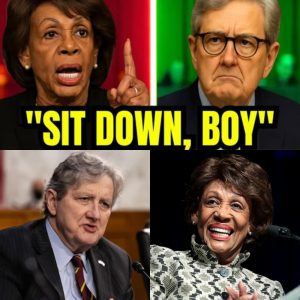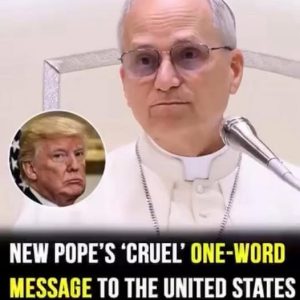In the high-stakes world of international diplomacy, every gesture carries weight, every movement is analyzed, and every moment of physical contact between world leaders becomes a window into deeper psychological and political dynamics. What happened in the first seconds of a crucial summit meeting in Alaska has sent ripples through social media, diplomatic circles, and international relations experts who understand that sometimes the most important communications happen before any words are spoken.
The moment captured global attention not for what was said, but for what was done—a brief physical interaction that many observers believe revealed fundamental truths about power, dominance, and the complex psychology that drives relationships between some of the world’s most influential leaders. In an era where diplomatic protocols are carefully choreographed and every public appearance is meticulously planned, unexpected moments of authentic interaction become magnified far beyond their apparent significance.
This particular encounter has sparked intense debate about leadership styles, negotiating tactics, and the role that physical presence and body language play in shaping international relationships. As millions watched and analyzed every frame of video footage, a simple handshake became a Rorschach test for understanding broader questions about American leadership, Russian strategy, and the delicate dynamics that could determine the fate of ongoing conflicts affecting millions of lives.
The Moment That Captured Global Attention
The handshake between President Donald Trump and Russian President Vladimir Putin in Anchorage, Alaska, lasted only seconds, but its impact has reverberated far beyond that brief moment of physical contact. Video footage of the encounter shows Trump executing what observers immediately recognized as his signature “yank” handshake—a forceful pulling motion that brings the other party closer to him while maintaining his own position of strength.
The technique, which Trump has employed with numerous world leaders throughout his political career, involves grasping the other person’s hand and then pulling them toward him with sufficient force to momentarily disrupt their balance and position. This movement, whether calculated or instinctive, has the effect of placing Trump in the dominant position while forcing the other party to adjust their stance and recover their equilibrium.
In this particular instance, the handshake appeared especially pronounced, with Putin visibly pulled forward by the force of Trump’s grip. The Russian leader, known for his own carefully crafted public image and physical presence, was momentarily off-balance before regaining his composure and returning to his typical stoic demeanor.
Social media reaction was immediate and intense. One Twitter user captured the mood of many Trump supporters with an enthusiastic post: “President Trump DOES THE YANK HANDSHAKE! He pulled in Putin’s hand! I VOTED FOR THIS!!” The exclamation points and capital letters conveyed the excitement that many Americans felt seeing their president assert what they perceived as physical dominance over a foreign adversary.
The responses from observers revealed deep partisan divisions and different interpretations of what the moment represented. Trump supporters saw it as evidence of strong leadership and American dominance, while critics questioned whether such tactics were appropriate for delicate diplomatic negotiations. International relations experts found themselves analyzing body language with the same intensity typically reserved for parsing treaty language and policy statements.
Video: ABC News
The Psychology of Presidential Handshakes
Trump’s handshake technique has been the subject of extensive analysis throughout his political career, with body language experts, psychologists, and diplomatic observers offering various interpretations of its meaning and effectiveness. The “yank” handshake represents more than a quirky personal habit—it’s a deliberate expression of dominance that reflects broader approaches to negotiation and relationship-building.
From a psychological perspective, the handshake serves multiple functions in establishing the dynamic between two powerful individuals. By controlling the physical interaction from the first moment of contact, Trump attempts to establish psychological dominance that could influence the entire subsequent interaction. The technique forces the other party into a reactive position, potentially creating a subconscious sense of being off-balance that extends beyond the physical moment.
The handshake also serves as a form of nonverbal communication that conveys confidence, strength, and control to both the other party and observing audiences. In Trump’s case, this technique has become so associated with his public persona that its absence might be interpreted as weakness or uncertainty, creating pressure to maintain consistency in his physical approach to diplomatic encounters.
However, the effectiveness of such tactics with someone like Putin—himself known for carefully orchestrated displays of physical strength and dominance—remains questionable. Putin has built his own political brand around projections of masculine strength, including highly publicized activities like horseback riding, martial arts demonstrations, and other physical displays designed to reinforce his image as a strong leader.
The interaction between two leaders who both employ physical presence as part of their political strategy creates a complex dynamic where neither can afford to appear subordinate or weak. This underlying tension may actually complicate diplomatic efforts by introducing unnecessary elements of personal competition into discussions that require careful cooperation and compromise.
Putin’s Response and Body Language
Vladimir Putin’s reaction to Trump’s forceful handshake provides its own insights into the Russian leader’s diplomatic strategy and personal psychology. Unlike some other world leaders who have appeared genuinely surprised or uncomfortable with Trump’s handshake technique, Putin’s response suggested a level of preparation and control that reflects his extensive experience in high-stakes diplomatic encounters.
After being pulled forward by Trump’s grip, Putin quickly regained his balance and maintained his characteristic expression of calm control. This recovery demonstrated the kind of physical and psychological discipline that has characterized Putin’s public appearances throughout his lengthy political career. Rather than appearing flustered or dominated, Putin’s quick adjustment suggested someone who was prepared for such tactics and capable of adapting without losing composure.
Body language experts noted that Putin’s facial expression remained largely unchanged throughout the handshake, maintaining the neutral, slightly stern demeanor that has become his trademark in international settings. This consistency in expression, regardless of physical manipulation, suggests a level of self-control and preparation that reflects his background in intelligence work and his decades of experience managing public appearances.
The Russian leader’s ability to quickly recover from the physical disruption and maintain his composure may actually have undermined Trump’s intended effect. Rather than appearing dominated or off-balance, Putin’s response demonstrated resilience and adaptability that could be interpreted as its own form of strength.
International observers noted that Putin’s reaction seemed to suggest familiarity with Trump’s tactics, possibly indicating that Russian diplomatic preparations had included briefings on the American president’s physical approach to meetings. Such preparation would be typical of Putin’s methodical approach to international encounters and his reputation for extensive preparation before meeting with foreign leaders.
Social Media Explosion and Public Reaction
The viral spread of the handshake video across social media platforms revealed deep divisions in public opinion about Trump’s diplomatic style and its appropriateness for international relations. Within hours of the encounter, clips of the handshake had been shared thousands of times, generating millions of views and tens of thousands of comments that reflected sharply polarized interpretations of what had occurred.
Trump supporters embraced the handshake as evidence of strong American leadership, with many comments celebrating what they saw as their president’s refusal to be intimidated by foreign adversaries. “Trump just asserted dominance before the meeting even started,” wrote one user, capturing the sentiment of many who viewed the physical interaction as a positive demonstration of American strength.
“I know Putin felt that,” another commenter added, suggesting that the handshake had successfully communicated American resolve and confidence to the Russian leader. This interpretation reflected broader support for Trump’s unconventional diplomatic style and his willingness to break with traditional protocols in pursuit of what supporters see as more effective negotiation tactics.
Critics, however, questioned whether such displays were appropriate for sensitive diplomatic negotiations that could affect the lives of millions of people caught in ongoing conflicts. Some international relations experts expressed concern that physical dominance games could complicate efforts to build the trust and cooperation necessary for successful peace negotiations.
The social media response also revealed interesting generational and cultural divisions in how the handshake was interpreted. Younger users seemed more likely to view it through the lens of internet memes and viral content, while older observers focused more on its diplomatic implications and historical precedents.
International media coverage of the social media reaction highlighted how modern diplomacy unfolds simultaneously in traditional diplomatic channels and in the court of public opinion shaped by social media platforms. The immediate global availability of video footage and the speed of social media commentary meant that interpretations of the handshake were forming and spreading even as the actual diplomatic meetings were just beginning.
The Broader Context of Failed Diplomacy
The Alaska summit handshake occurred against a backdrop of mounting frustration within the Trump administration about the lack of progress in ending the Ukraine conflict. Despite Trump’s confident campaign promises to resolve the crisis within 24 hours of taking office, nearly seven months into his second term had produced no meaningful breakthrough in peace negotiations.
Trump’s admission in recent interviews that he cannot guarantee an end to civilian casualties in Ukraine marked a significant evolution from his earlier optimistic predictions. This more sobering assessment of the challenges involved in peace negotiations provided important context for understanding the Alaska meeting and the pressure both leaders faced to produce tangible results.
The president’s frustration with Putin’s responses to previous diplomatic overtures was evident in his comments about their conversations. “I’ve had a lot of good conversations with him then I go home and I see that a rocket hit a nursing home or a rocket hit an apartment building, and people are laying dead in the streets,” Trump explained, revealing the disconnect between diplomatic discussions and continued military operations.
This pattern of diplomatic engagement followed by military escalation has characterized much of the interaction between Washington and Moscow throughout Trump’s second term. Each time Trump has publicly urged Putin to engage in peace talks, Russian forces have responded with intensified attacks on Ukrainian positions and civilian infrastructure.
The minerals deal mentioned as one of the incentives offered to Russia represents part of a broader strategy to provide economic inducements for peace while also threatening economic consequences for continued military action. However, the effectiveness of such approaches remains unclear given Putin’s apparent willingness to absorb economic costs in pursuit of military objectives.
Economic Threats and Diplomatic Leverage
Trump’s warning of “economically severe” consequences for Russia if Putin failed to show willingness to negotiate reflected ongoing American efforts to use economic pressure as a diplomatic tool. However, the president’s refusal to specify exactly what these consequences would entail highlighted the delicate balance between maintaining negotiating leverage and avoiding escalatory threats that could derment diplomatic progress.
“I’m not doing this for my health, okay, I don’t need it. I’d like to focus on our country, but I’m doing this to save a lot of lives,” Trump explained, positioning his diplomatic efforts as humanitarian rather than political while also suggesting some level of personal sacrifice in engaging with the Russian leader.
The vague nature of Trump’s economic threats—”I don’t have to say. There will be very severe consequences”—reflected a common diplomatic tactic of maintaining ambiguity about potential responses while clearly communicating that consequences would follow unwelcome behavior. This approach allows for flexibility in actual implementation while potentially maximizing the deterrent effect of the threat itself.
However, the effectiveness of additional economic sanctions against Russia remains questionable given the extensive sanctions regime already in place and Russia’s demonstrated ability to adapt its economy to reduced Western integration. Putin’s government has successfully redirected trade relationships toward China, India, and other nations less committed to the Western sanctions framework.
The minerals deal offered as a positive incentive represents recognition that successful diplomacy may require offering benefits for cooperation rather than simply threatening costs for non-compliance. Access to Russian mineral resources, particularly rare earth elements crucial for advanced technology, could provide significant economic benefits for American companies while giving Russia alternative revenue sources to energy exports.
Historical Context and Diplomatic Precedents
The Alaska summit handshake and its aftermath fit within a broader historical pattern of how personal dynamics between leaders can influence international relations. From Churchill and Roosevelt’s wartime partnership to Reagan and Gorbachev’s relationship during the end of the Cold War, personal chemistry and individual leadership styles have often played crucial roles in shaping diplomatic outcomes.
However, the current situation differs significantly from these historical precedents in several important ways. Unlike previous superpower summits that focused primarily on arms control or ideological competition, the Alaska meeting is addressing an active military conflict involving a third party whose interests may not align with either superpower’s preferences.
The role of social media and instant global communication also creates new dynamics that didn’t exist during previous diplomatic encounters. Historical summit meetings were typically analyzed by diplomatic experts and reported through traditional media channels over periods of days or weeks. The Alaska handshake, by contrast, was analyzed, interpreted, and debated by millions of people within hours of occurring.
This acceleration of public reaction and analysis creates both opportunities and challenges for diplomatic efforts. On one hand, positive public reaction can build political support for diplomatic initiatives and create momentum for further negotiations. On the other hand, negative reactions or misinterpretations can create pressure for leaders to adopt more confrontational positions to satisfy domestic political constituencies.
The Challenge of Measuring Diplomatic Success
As the Alaska summit continued beyond the initial handshake moment, the challenge of defining and measuring diplomatic success became increasingly apparent. Traditional metrics of diplomatic achievement—signed agreements, mutual concessions, clear commitments—seemed inadequate for addressing the complex realities of the Ukraine conflict and the competing interests of all parties involved.
Trump’s own shifting expectations reflected this challenge. His evolution from promising rapid resolution to acknowledging the difficulty of stopping civilian casualties represented a more realistic but politically problematic assessment of what diplomacy could achieve in the current circumstances.
The handshake itself became a metaphor for these broader challenges. While supporters celebrated it as evidence of strong leadership, critics questioned whether physical dominance displays were relevant to the complex negotiation challenges involved in ending an active military conflict.
International observers noted that successful conflict resolution typically requires building trust and finding face-saving solutions for all parties rather than establishing dominance relationships between negotiating partners. From this perspective, the handshake might actually complicate diplomatic efforts by introducing unnecessary competitive dynamics.
Media Coverage and Narrative Control
The extensive media coverage of the handshake also highlighted ongoing battles over narrative control in international relations. Both American and Russian media outlets emphasized different aspects of the interaction, reflecting broader propaganda efforts to shape public understanding of their leaders’ effectiveness and strength.
American conservative media generally portrayed the handshake as evidence of Trump’s strong leadership and refusal to be intimidated by foreign adversaries. Liberal American media was more likely to criticize the display as inappropriate for serious diplomatic negotiations or as evidence of Trump’s focus on personal dominance rather than substantive policy outcomes.
Russian media coverage was more restrained, typically focusing on the substantive discussions rather than the physical interactions. This approach reflected Putin’s general strategy of maintaining dignity and avoiding the appearance of being drawn into personal competitions with foreign leaders.
International media coverage varied significantly, with some outlets treating the handshake as an interesting sidebar to more important diplomatic discussions while others analyzed it as evidence of broader American diplomatic approaches under Trump’s leadership.
Looking Beyond the Handshake
While the handshake dominated initial coverage of the Alaska summit, its ultimate significance will depend on whether the meeting produces any meaningful progress toward ending the Ukraine conflict or addressing other sources of tension between the United States and Russia.
The physical interaction between Trump and Putin revealed important aspects of both leaders’ personalities and approaches to international relations, but these insights must be evaluated alongside concrete diplomatic outcomes and policy changes that may result from their discussions.
For Trump, the handshake represented consistency with his established pattern of using physical presence and dominance displays as part of his negotiating strategy. Whether this approach proves effective with Putin will depend on subsequent developments in their relationship and any agreements that may emerge from their meetings.
For Putin, his controlled response to Trump’s handshake technique demonstrated the kind of preparation and discipline that has characterized his approach to international relations throughout his lengthy political career. His ability to maintain composure while adapting to unexpected physical interactions reflected broader strategic patience that may serve Russian interests in extended negotiations.
Conclusion: When Gestures Become Geopolitics
The Trump-Putin handshake in Alaska will likely be remembered as one of those moments when personal dynamics and international relations intersected in ways that revealed deeper truths about leadership, power, and the complex psychology of diplomatic negotiations. Whether viewed as evidence of strong American leadership or inappropriate diplomatic behavior, the interaction highlighted the continued importance of personal relationships in international affairs.
The viral social media response to the handshake demonstrated how modern diplomacy unfolds simultaneously in traditional negotiating rooms and in the global court of public opinion shaped by instant communication and social media platforms. The speed and intensity of public reaction created new pressures and opportunities for both leaders as they navigated the substantive discussions that followed.
Ultimately, the significance of the handshake will be determined not by the physical interaction itself but by whether the Alaska summit produces meaningful progress toward ending the conflicts and tensions that brought the two leaders together. The moment of physical dominance may have satisfied certain political constituencies and provided compelling social media content, but the real test of diplomatic success lies in the ability to translate personal interactions into policy outcomes that serve broader national and international interests.
As the world continues to watch the development of U.S.-Russia relations and the ongoing efforts to resolve the Ukraine conflict, the Alaska handshake serves as a reminder that in the high-stakes world of international diplomacy, every gesture carries weight, every moment of contact communicates meaning, and the personal dynamics between leaders can influence outcomes that affect millions of lives around the world.





